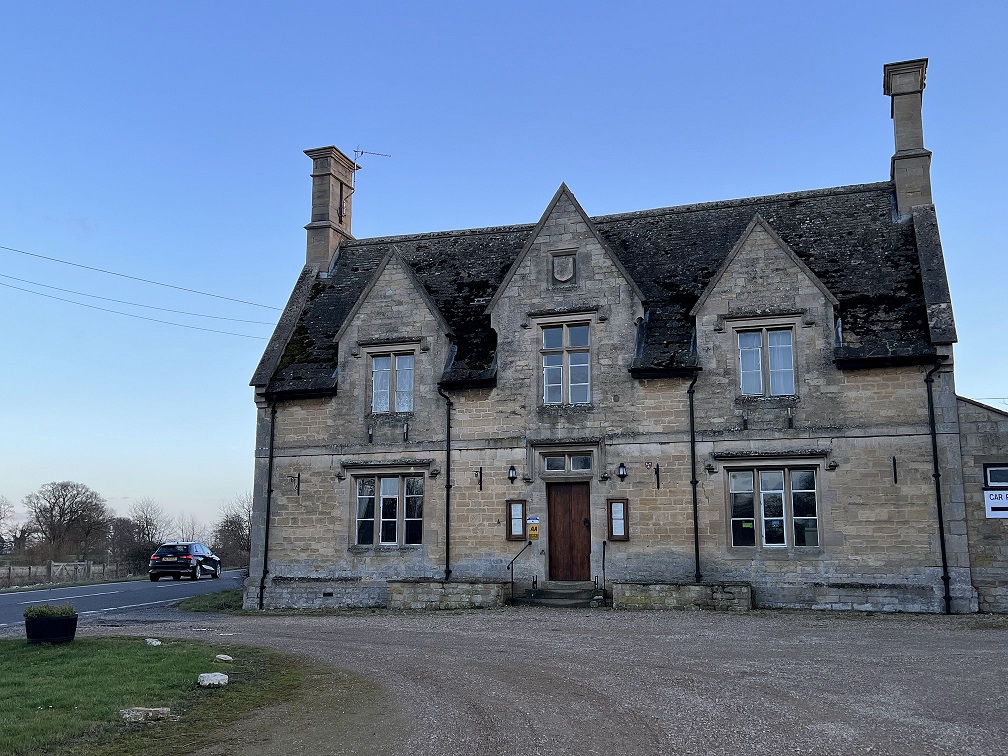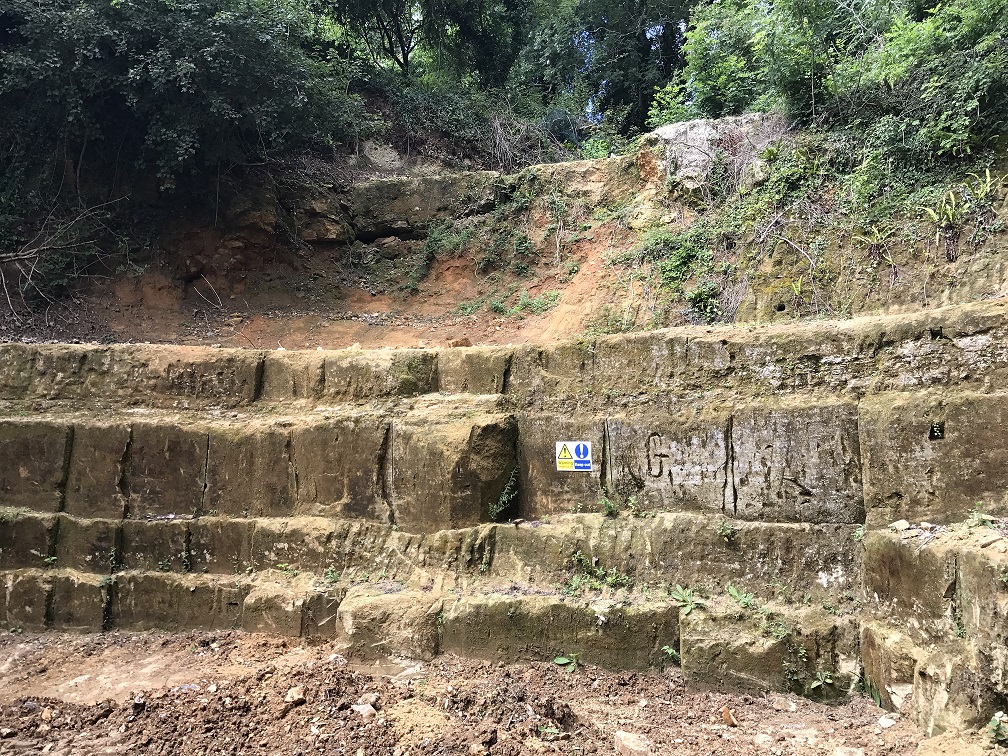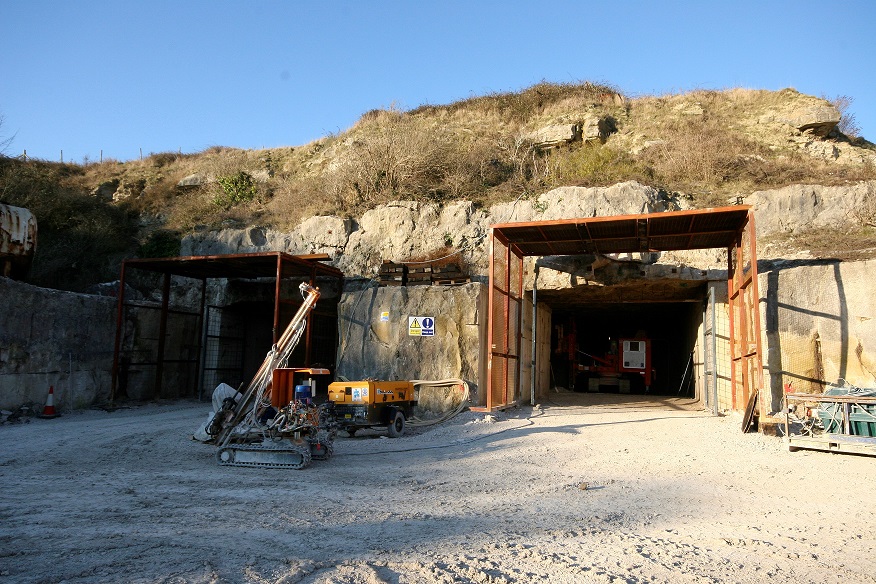Stone Supply and the Planning System
Eleni Makri
 |
|
| Island of Portland: cutting with a diamond saw at Jordan’s mine (Photo: Chris Wood) |
The conservation of the historic environment relies on the supply of suitable materials to match the existing. When it comes to stone, many old quarries have long been abandoned and those still in use are often under threat, sometimes from the planning system itself.
Primary legislation and the Strategic Stone Study
In England, the supply of building and roofing stone for the conservation and repair of historic buildings falls under the legislation and governmental guidance on minerals. Primary legislation is provided by Section 97 of Part II of Schedule 5 and Schedule 9 to the Town and Country Planning Act 1990.
This establishes the means for Mineral Planning Authorities (MPAs) to control minerals development. The relevant governmental policy is section 17 of the National Planning Policy Framework (NPPF) Facilitating the sustainable use of minerals.
Minerals, and therefore stone extraction requires planning permission from the MPA, and in some cases additional permits and approvals, for example, ones from the Environment Agency and Natural England.
The MPA in two-tier local government is the county council; otherwise, it’s the unitary authority or the national park authority. Back in 2004, the Symonds Report Planning for the Supply of Natural Building and Roofing Stone in England and Wales had identified serious problems in sourcing stone for historic building repairs.
It recommended setting up a national database and for mineral authorities to identify and protect ‘heritage quarries.’ This report is the background to Section 17 of the NPPF and to the Strategic Stone Study (SSS), a national database developed by the British Geological Survey with the help of local geological and historic building experts, which was commissioned and funded by Historic England.
The SSS uses a combination of fieldwork, historic records and maps, together with a representative range of historic structures to identify the most significant building stones in each English county.
Freely available on the British Geological Survey website, it is of tremendous help to the stone specifier for two reasons:
- there is a vast number of stones used in the historic environment and these have now been largely catalogued along with representative historic buildings
- it has made it possible to source new stone for repairs which matches both the appearance and the physical qualities of porosity and permeability of the original – the latter being important in avoiding different weathering of the new stone or even decay acceleration of the old.
To understand how this all works in practice, the recent casework examples below may be helpful.
Natural Stone Slates or Artificial Substitutes

The Grade II listed Tally Ho Inn, Aswarby: listed building consent was granted for replacing its natural Collyweston stone slates with artificial ones. (Photo: Chris Haythornthwaite)
In 2020, listed building consent was sought for reroofing an 18th century pub in Aswarby, Lincolnshire, replacing its Collyweston stone slates with an artificial slate.
The building, the Tally Ho Inn was listed Grade II and its original Collyweston slate roof coverings were mentioned in the list description.
Despite this and against the strong objections submitted by the SPAB, the application was supported by the local authority’s conservation officer and approved. The overall justification for granting consent was the high cost of using matching stone replacements from existing quarries due to limited supply.
According to the conservation officer’s report, the cost amounted to £400,000 and was twice as much as the market value of the listed building itself. The decision was taken in contradiction to Historic England’s Technical Advice Note 2005, Stone Slate Roofing which strongly advises against the use of artificial stone, as pointed out by the SPAB in its objections.
Looking at the images in North Kesteven Council’s planning file, there can be no doubt that the roof of the listed building needed attention. However, detailed published advice is widely available on understanding, assessing and repairing stone slate roofing, including Collyweston roofs specifically.
From the council’s online planning records it would appear that during the assessment and determination of this application, no consideration was ever given to how such published expert advice might be successfully applied in this case. Furthermore, the approval did not provide for salvaging any of the original for re-use, despite the rarity of the roofing material.
Reopening a Quarry for Repairs at Exeter Cathedral

Dunscombe Manor Quarry which was successfully reopened for repairs at Exeter Cathedral (Photo: Emily Harper)
This case is a success story where a small quarry was reopened for repairs to Exeter Cathedral owing to the concerted efforts of the county council.
Until the early 1990s, Salcombe sandstone needed for repairs to Exeter Cathedral was obtained from Duscombe Manor Quarry which was operated by the cathedral, but in 1994 quarrying ceased and the quarry was locked up when the planning permission lapsed.
When more stone was needed for repairs, the cathedral approached Devon County Council in 2013 with a view to reopening the quarry.
While small scale extraction of locally distinctive stone of this nature was supported by both the Devon Minerals Local Plan and by the NPPF and the Minerals Practice Guidance, several other considerations also applied.
In particular, the quarry was located within an AONB and a coastal preservation area; it affected the setting of the Sidmouth to Beer Coast of special scientific interest and the Sidmouth to West Bay ‘special area of conservation’ – an international designation.
It was also situated within a holiday caravan park, so issues of impact on the amenity and the business of the park had to be considered.
In response, Devon County Council approached the AONB team, English Heritage and Natural England to seek their requirements for a planning application in 2013.
As a result, it was possible to approve within six weeks from submission and allowed for the extraction of five cubic metres per year for 10 years, with conditions allowing for extraction only outside the caravan park’s main holiday season and minimum disturbance to bats and breeding birds.
On starting the work Exeter Cathedral had to submit another application for a different area to the one that was approved, and an updated method of working.
The change enabled a year’s extraction to be carried out in a single day and the stone to be stored at the cathedral. The permission granted until 2027 was issued within five weeks of the submission, and works have been running smoothly ever since.
Portland Stone Extraction from a Brownfield Site

Island of Portland: the entrance to Jordan’s mine (Photo: Albion Stone)
By contrast, one recent planning decision at Portland Island in Dorset, (WP/19/00919) resulted in the loss of an opportunity to extract Portland stone from the brownfield site of the former Royal Manor School prior to its redevelopment for housing.
NPPF paragraph 204 at the time (paragraph 210 in the 2021 review) provided the statutory basis for the determination of the application.
It requires that planning policies should: a) safeguard mineral resources by defining Mineral Safeguarding Areas; and adopt appropriate policies so that known locations of specific minerals resources of local and national importance are not sterilised by non-mineral development where this should be avoided (while not creating a presumption that the resources defined will be worked) b) set out policies to encourage the prior extraction of minerals, where practical and environmentally feasible, if it is necessary for non-mineral development to take place.
The local Mineral Safeguarding Area (MSA) was designated in 2014 and there are no local policies for the protection of minerals outside its boundary.
Although the school lay outside the MSA, part of the site already had a significant mining history as an extension to the adjoining Jordan’s mine run by Albion Stone plc.
The mine’s most recent consent had been granted in 2018 by Dorset County Council prior to its abolition in 2019. The consent had a time limit to the end of September 2021, allowing the extension of extraction within the site underneath one of the redundant buildings.
This consent had been given despite the opposition of the site’s future developer.
In response to the application to develop the site for housing, the mineral planning authority made the strongest possible case for extraction prior to redevelopment, but having been incorporated within the planning service earlier in the year, the MPA found that it was unable to make its argument heard by Dorset Council, the new unitary authority.
The mine operator, Albion Stone plc confirmed its willingness to undertake the prior extraction of the stone within a three-year period.
The applicant’s minerals consultant also suggested that in theory, safeguarding could take place outside a designated MSA if it became evident post-MSA designation that stone worthy of safeguarding existed beyond the MSA boundary, and this could be achieved by invoking national and local policies.
Nevertheless, Dorset Council granted the housing development planning permission in February 2021 (see http://bc-url.com/919) on the basis that planning officers were satisfied that there were adequate reserves of Portland stone elsewhere, and on the understanding that the mining consents granted by the former county council were ‘a temporary opportunity in recognition that the site would make an important contribution to local housing need’.
The consent made no provisions for the prior extraction of the stone, to the surprise and disappointment of the local industry and the consultees who supported it, the MPA, the English Stone Forum and Historic England.
Portland stone is limited to the Island of Portland and was the first ever stone to be registered as a Global Heritage Stone Resource.
Lessons Learned
Is it the case that stone safeguarding is more effective when the Minerals Planning Authority (MPA) is independent from the local planning authority? The Exeter Cathedral case was dealt with by a county council (Devon), and the planning permission for stone extraction outside the designated MSA in Portland was also granted consent by a county council (Dorset before its abolition in March 2019).
Furthermore, the strong support of the MPA in Portland island following its subsequent absorption within the local planning authority had no effect in the decision making of the planning application for the redevelopment of the former Royal Manor School. Cost also emerges as a key factor in the use of matching stone.
Exeter Cathedral had also applied in 2013 and succeeded in obtaining planning permission for the extraction of Beer Stone from the Beer Quarry Caves but use of this permission was not feasible because of the cost of setting up the mining operations, which was independent of the small quantities needed.
Similarly, cost was behind the decision not to use matching Collyweston slates in the re-roofing of the Grade II listed Tally Ho Inn, despite them being mentioned in the statutory list entry of the building and being available through limited quarrying.
Do these two examples demonstrate that some limited quarrying is far too expensive to be viable? If so, what should happen when matching original stone is beyond the financial means of a project?
In the case of Exeter Cathedral, an alternative natural stone has been used for some repairs where the original was unavailable.
The use of this substitute, a readily available French stone of comparative qualities, was justifiable as this would be consistent with published guidance from Historic England.
On the other hand, the replacement of the Collyweston slates with an artificial substitute cannot be accepted as an appropriate approach, particularly as the consideration of other options and a discussion with Historic England does not appear to have preceded the granting of listed building consent.
While it is in the local planning authority’s power to grant consents, is this not a clear case where the detailed advice of HE should be sought and given, including the consideration of grant assistance and how the Strategic Stone Study might be of use in this instance?
Recommended Reading
National Planning Policy Framework 2021
Government guidance on minerals 2014
British Geological Survey, The Strategic Stone Study Database
Context 154, May 2018 pp 14–16, Clara Willett and Chris Wood, ‘Finding Stone’ pp 17–19, Emily Harper and Sue Penaluna, ‘Sourcing Stone to repair Exeter Cathedral’
Historic England, Stone Slate Roofing, Technical Advice Note 2005 (2018)
Janine Dykes, ‘Collyweston Roofs’, The Building Conservation Directory 2019



